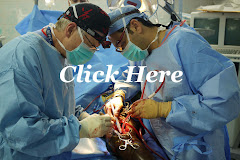Corey Fuller volunteered in Haiti while a senior Loma Linda University medical student. Corey has been accepted into the Orthopaedic Surgery Residency Program at Loma Linda and is starting his intern at the LLU Medical Center. Corey's wife, Juliana, a nurse at the LLU Medical Center, also joined him on the trip to Hopital Adventiste.
I have been eager to visit Hopital Adventiste d’Haiti since my class at Loma Linda University School of Medicine adopted it back in 2007. My chance came in March 2010 as my senior schedule allowed me to spend a two-week elective at the hospital with my wife.
The plane ride from Miami to Port-au-Prince was fascinating as everyone on the flight was a volunteer of some organization headed down to help the Haitian people. There were people from all over the world and from all kinds of professions including doctors, nurses and pastors. The passion and excitement of a group of people on a mission was tangible and I was excited to be part of it.
We were all shocked upon arrival at the destruction everywhere, starting with major cracks in many of the airport buildings. Even though I arrived in Port au Prince two and a half months after the earthquake, it seemed as though it had happened the day before. I didn’t realize that cleaning up the rubble is expensive and yet necessary before the rebuilding can even begin. Haiti is so poor they can’t even afford to clean up the rubble, let alone rebuild their city.
Upon arriving at the hospital I quickly made my way to the OR and was happy to see two of my future attendings Dr Matiko and Dr Nelson as well as two future coresidents Dr Hadley and Dr Elsissy. They were excited to have me on board and quickly put me to work. We would usually start rounding each morning between 6-7AM and then broke for worship at 7:30. After worship we would divide into two teams one heading to the OR and the other to run the busy clinic. The clinic was first come first serve and one morning I happened to walk by the clinic at 6AM and was surprised to see a long line already even though it didn’t start until 8:00AM.
The experience was great for a medical student as there is always more to be done than can be, and a motivated student can make a big difference. I was able to assist in surgeries, put on casts, change dressings, reduce a shoulder dislocation as well as run the orthopaedic clinic for one morning by myself. One particular case that I remember well was a young man who showed up with calf pain for three days, but no other complaints. He was well enough to walk to the OR table and get himself on it. However, we realized he was much sicker than we thought when we opened up his calf to the smell of rotting flesh and a whole compartment of dead muscle. Suspecting necrotizing fasciitis we quickly began successive attempts at amputations climbing the leg until we found bright red living muscle just below the hip. Unfortunately we caught it too late and the patient died later that night, but I will never forget what it looked like and hopefully will be able to catch it earlier next time.
Another memorable part of my trip was the English translators. The earthquake left many college students and teachers unemployed. As educated individuals, many spoke English in addition to French and Creole and chose to volunteer at the Adventist hospital to serve others in this time of need. Even though many had lost everything including their jobs, families and homes they never complained and were undoubtedly the hardest workers in the hospital. Without their dedication and selfless giving communication would not have been possible and the massive medical relief effort at Hopital Adventiste d’Haiti would not have been nearly as effective.
My experience in Haiti was an important and memorable one. I was able to help out the orthopaedic team and hospital in many ways and could truly see the difference that was being made by Loma Linda University’s presence there. As a student I was given a level of responsibility that I’ve never had before in medical school and out of it has come the confidence that I will be able to successfully make the transition from student to resident physician in the coming months.















































